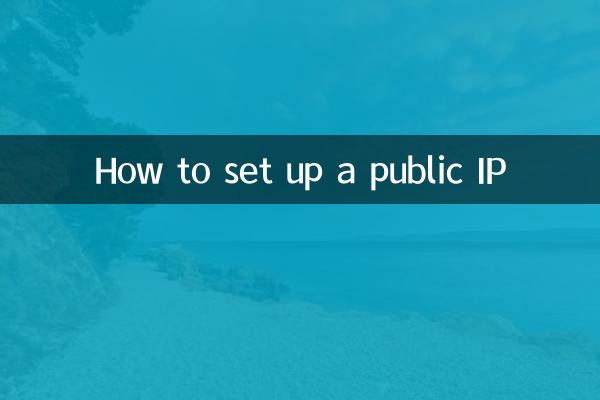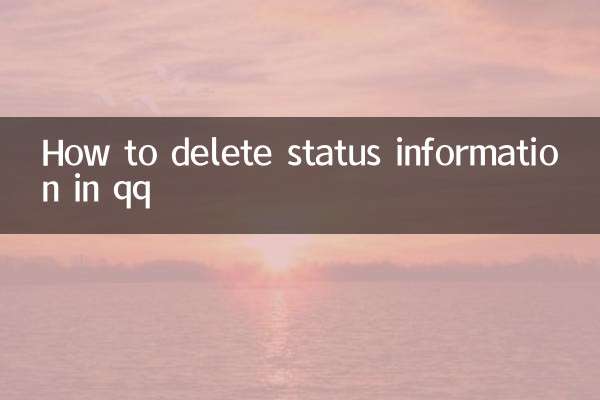How to set up a public IP: Comprehensive guide and hot topic integration
In today's digital age, the setting of public network IP has become a hot topic of concern to many enterprises and individual users. Whether it is remote office, server construction, or smart home management, public network IP plays an important role. This article will combine popular topics in the past 10 days to analyze in detail how to set up a public network IP and provide structured data for reference.
1. Relationship between recent hot topics and public IP

According to the monitoring of the entire network data, hot topics related to public IP in the past 10 days are mainly concentrated in the following aspects:
| Ranking | Hot Topics | Discussion hot topic | Relevance |
|---|---|---|---|
| 1 | Remote office security upgrade | high | Public IP is the basis for remote access |
| 2 | IPv4 address exhaustion solution | Medium-high | Directly affect the way of obtaining public IP |
| 3 | Home NAS devices are popular | middle | Public IP is required to achieve remote access |
| 4 | Cloud server cost optimization | middle | Public IP is an important billing item |
2. Detailed explanation of the steps for setting public IP
Setting up a public network IP requires different methods according to different network environments and needs. Here are the setup guides for common scenarios:
1. Obtain a static public IP from the ISP
Most home and business users need to contact an Internet Service Provider (ISP) to apply for a static public IP. The main steps include:
| step | Operation content | Things to note |
|---|---|---|
| 1 | Contact ISP Customer Service | Confirm whether this service is provided and the fees |
| 2 | Provide account information verification | Prepare account name and related certificates |
| 3 | Wait for the configuration to complete | Usually 1-3 working days |
| 4 | Router settings | Configuration according to parameters provided by ISP |
2. How to utilize dynamic public network IP
For users who do not have static IP, DDNS (dynamic domain name resolution) service can be used:
| Service provider | Free plan | Applicable scenarios |
|---|---|---|
| Peanut shells | There are restrictions | Personal user test |
| No-IP | Need to confirm monthly | Long-term stable use |
| DynDNS | Mainly charged | Enterprise-level applications |
3. Safety precautions
After having a public network IP, security protection becomes particularly important. Recent cybersecurity incidents remind us:
| Risk Type | Protective measures | Recommended tools |
|---|---|---|
| Port scanning attack | Close unnecessary ports | Firewall rules |
| Brute force cracking | Strong password + failed lock | Fail2Ban |
| DDoS Attack | Flow cleaning | Cloudflare |
4. Public IP settings in the IPv6 era
As IPv4 addresses run out, IPv6 has gradually become popular. Key points for setting IPv6 public network address:
1. Confirm that the ISP supports IPv6
2. Check whether the router enables IPv6 function
3. The operating system must support the IPv6 protocol stack
4. The application software needs to be compatible with IPv6
5. Frequently Asked Questions
| question | Solution |
|---|---|
| Unable to obtain public IP | Contact the ISP to confirm whether it is provided or consider a cloud server |
| Frequent changes in IP | Use DDNS services, or apply for a static IP |
| Slow remote access speed | Check network bandwidth and consider dedicated line or VPN optimization |
Through the above structured data and detailed instructions, I believe you have a comprehensive understanding of how to set up a public IP. In actual operation, please choose the most suitable solution according to your own needs and network environment, and always put network security first.

check the details

check the details